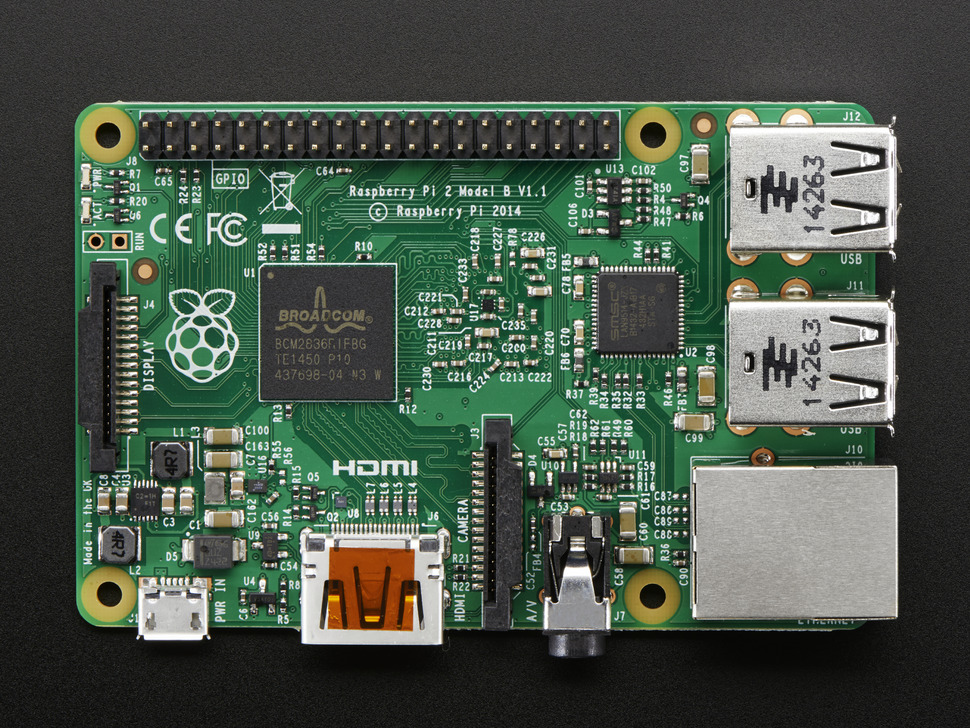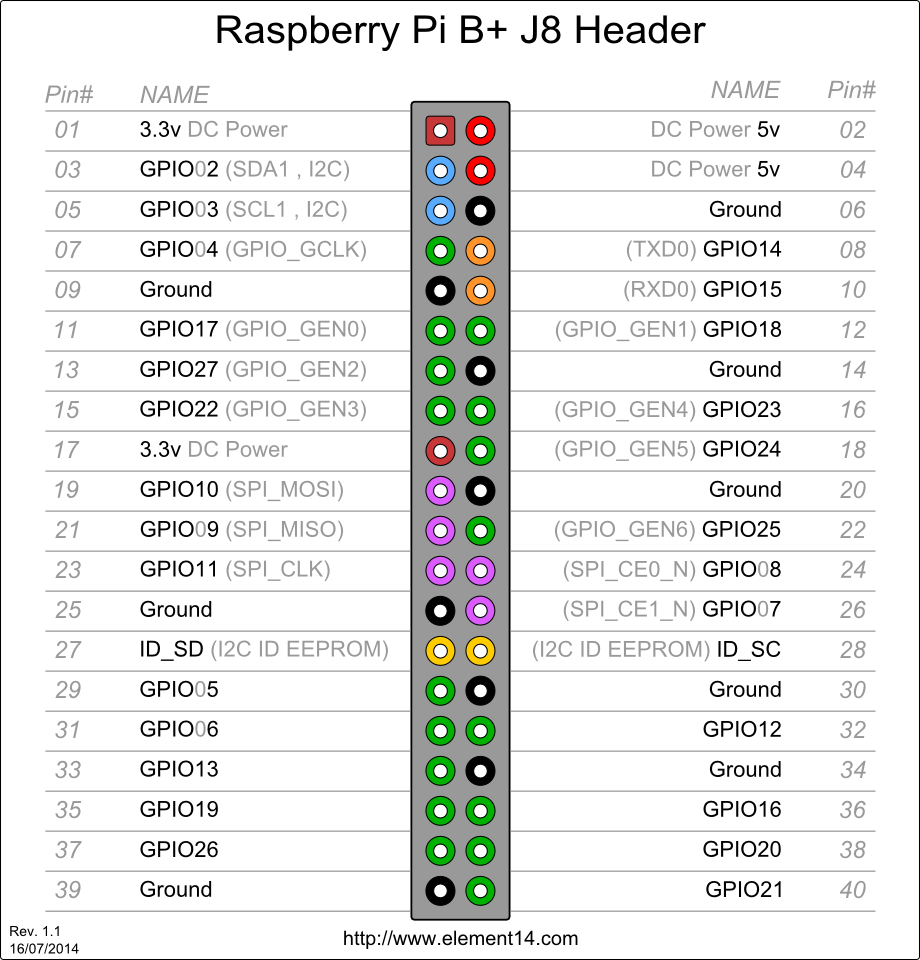Raspberry Pi 2 & 3
2017
So far, I have purchased both a Raspberry Pi 2 and a Raspberry Pi 3 for testing.
These units have the expanded 40 pin header, as shown below.
The Pi machines run a specially compiled Linux distribution, which does not provide for real time processing like the Arduinos. Most of the coding for applications seems to be done in python using special low level libraries.
I have interfaced my Pi to webcams and also to the Pi 5 megapixel camera, saving pictures to the flash card. The machines work well as small Linux computers, allowing for useful word processing and other work to be done.
Because these machines are larger than the fubarino and teensyduino, and take much more power, they do not seem to be as suitable for use in a lightweight balloon payload. They might work out in the payload for a larger balloon or in a cubesat.
Note the 40 pin expansion header at the top of the image. This is for the GPIO expansion for the Pi. The HDMI port is on the bottom, and next to it is the camera interface. The usb and ethernet ports are on the right. The unit is powered via the mini usb port that is left of the HDMI in this picture.
The GPIO pins are shown below:
You can see above that the Pi has one SPI port, one I2C port, and a serial port. There are NO analog I/O ports, unlike the arduino. The arduino mega also has more serial ports of course. The upside on the Pi is the 1GB of RAM, plus the flash drive which can have 4GB or more of storage.


